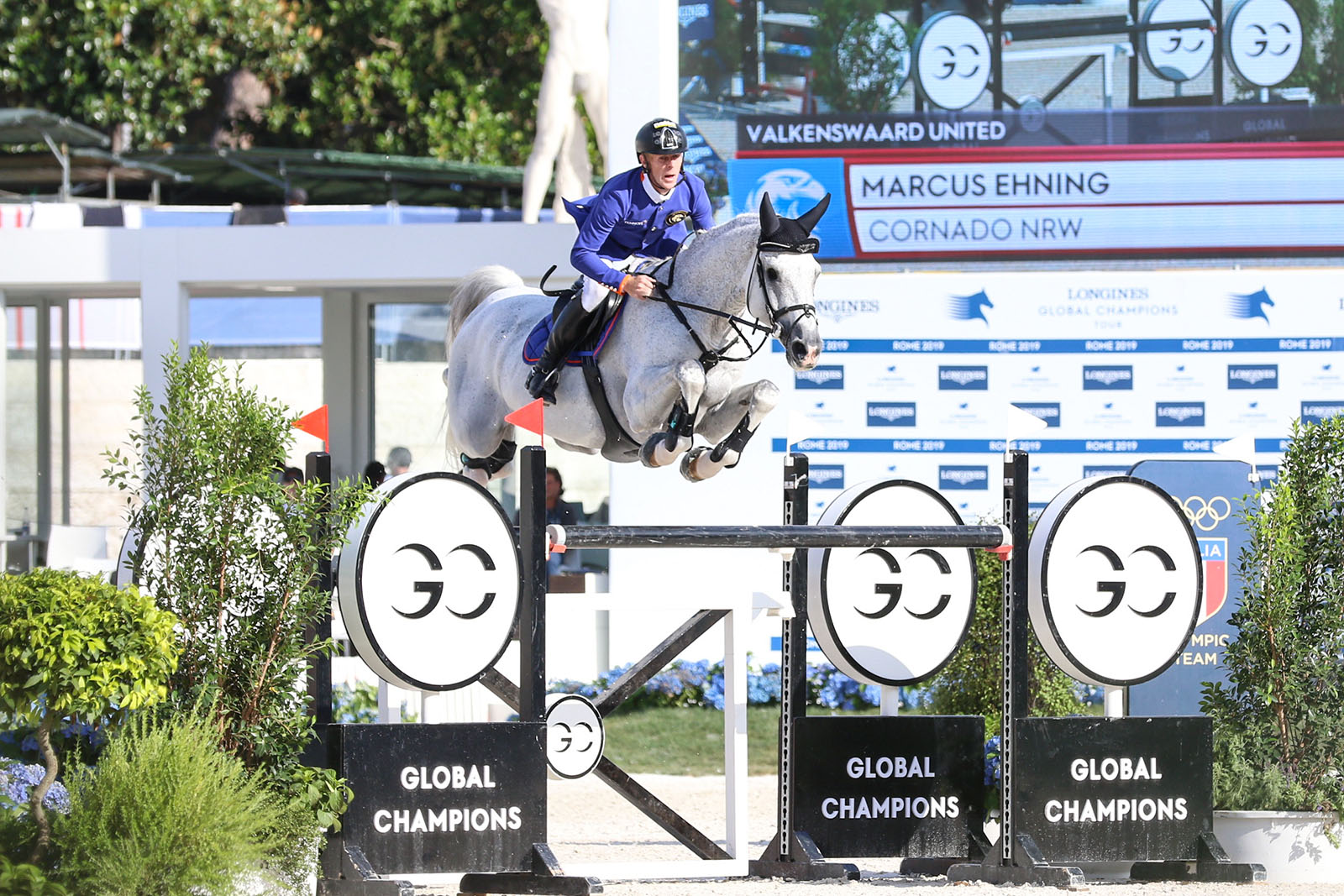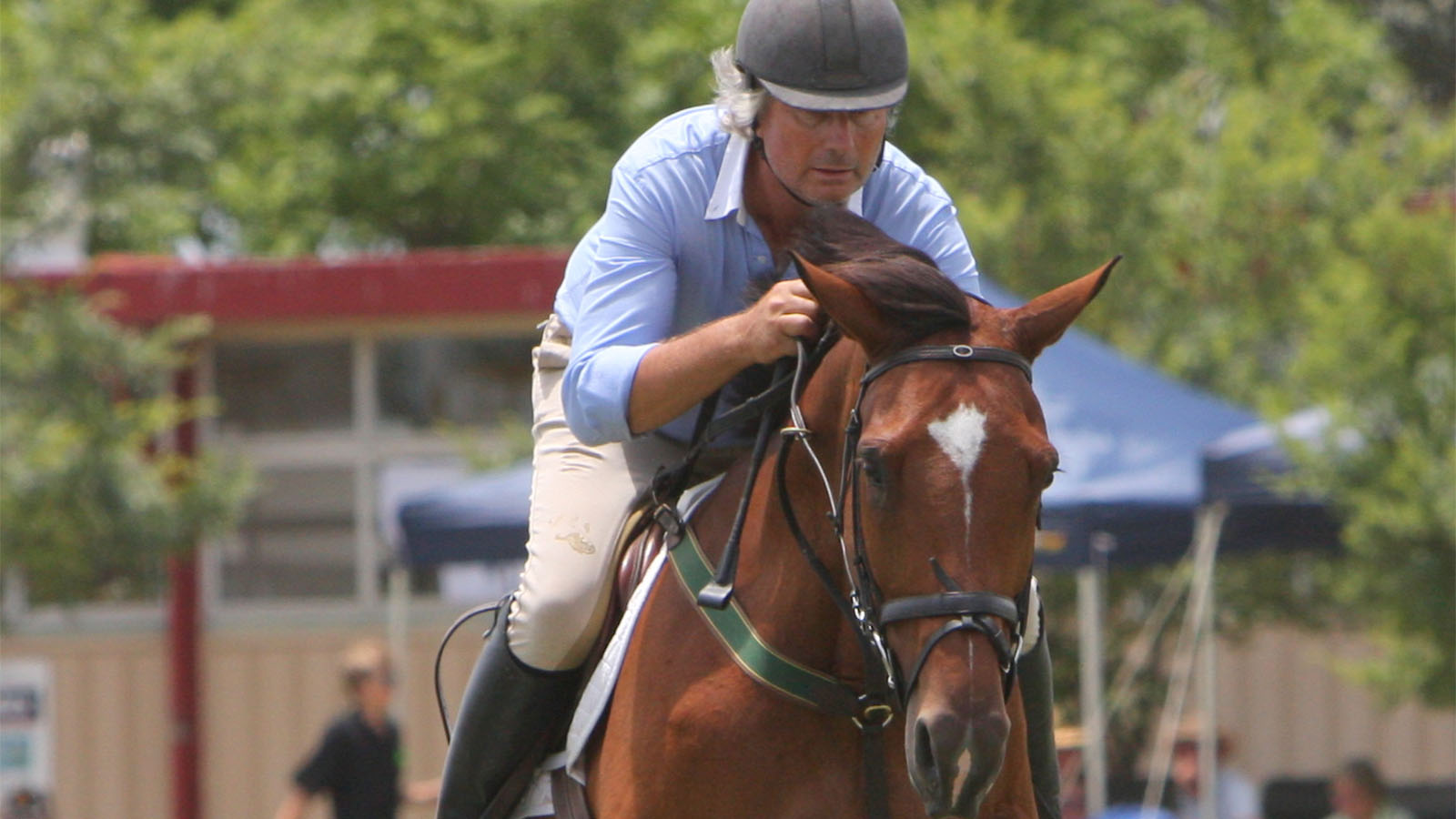In this issue
“The shoulder-in is the first and last lesson one must give a horse,” said de la Gueniniere, the classical master who invented it, in 1733. Kerry Mack links this wisdom to modern research that shows that the shoulder-in relaxes the horse.
As an Equestrian Australian member, Heath Ryan feels bullied by the Australian Sports Commission and let down by the EA Board. However, he also feels some good may come from the administration process in the long run.
With international travel off the cards for some time and the Longines Global Champions Tour on hold until 2021, we take a look back at one of the tour’s most unique and impressive legs at the ‘Stadium of Marble’ in Rome.
Motivational speaker, two-time Paralympian and Grand Prix-level dressage rider Sue-Ellen Lovett has written her first book about how a real-life soul match – her beloved horse Johno – helped her overcome the trials and tribulations of being blind.
How does an elite level showjumping horse adjust to losing an eye yet still face a 1.60m jump at high speed? Easily, apparently, if you are the super cool stallion Cornado NRW.
There is no such thing as the perfect horse, but clever and careful presentation can go a long way to improving the overall picture in the dressage arena, says Roger Fitzhardinge.
In addition to being an accomplished coach, George Sanna also boasts some impressive culinary skills! After a busy day coaching at Chatham Park, he turns to a tried and tested recipe that’s a little different to the average winter soup.
UK-based Australian eventer Sophie Adams has had a unique international equestrian adventure. Starting with Oliver Townend early last year, she has since made her way to Pippa and William Funnells’ famed Billy Stud — and experienced the effects of a global pandemic along the way.
Whether you’re working towards getting out and competing once live competitions restart, or have entered Equestrian Life’s Virtual Winter Dressage Series, these tips are for you!
Elite athletes don’t get to the top of their game simply doing what they do best all of the time. They hone their fitness, their strength and their health through a whole range of extracurricular means, says Dr Ian Northeast.
Hey, hey, fellow riders and horse lovers, after umpteen years of turmoil and failure by Equestrian Australia (EA) to meet member expectations, there IS finally an opportunity to reform our sport.
We know our horses recognise us when we approach them, and we assume it is through cues such as smell, sound, and sight. French researchers are taking the next exciting step to determine whether horses can recognise on sight alone… as in from a photo.
Following on from Dr Maxine Brain’s article last month on the principles of rehabilitation, we now examine the types of exercises that can be done both for rehabilitation and improving core strength and balance.
Great Australian showjumper and Olympian George Sanna may have retired from the competition circuit, but he is getting just as much pleasure in imparting his knowledge on to new riders as a coach.















